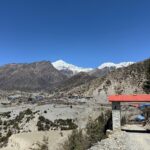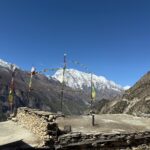
Toilet Facilities on the Everest Base Camp Trek
Toilet Facilities on the Everest Base Camp Trek vary from basic teahouse restrooms to simple outdoor toilets, depending on the location. When planning a trek to Everest Base Camp, toilets might not be the first thing on your mind, but they play a vital role in your journey.
Let’s explore what you can expect regarding facilities along the route. We’ve addressed this often-overlooked aspect of high-altitude trekking, from sit-down to squat toilets.
Everest Base Camp Toilets: What to Expect
Understanding what to expect in terms of toilet facilities on your trek to Everest Base Camp can enhance your comfort and make your journey more eco-friendly.
Types of Toilets You’ll Encounter
As you trek to Everest Base Camp, the types of toilets you’ll find can vary just as much as the scenery. Here’s a breakdown:
Sit-Down Toilets
In the lower altitudes and more populated areas like Lukla and Namche Bazaar, you’ll come across sit-down toilets that resemble what you’re used to at home.
These are typically found in the lodges and tea houses at Everest Base Camp where trekkers take a break. However, don’t expect a luxurious bathroom experience; they are basic but serve their purpose.
Squat Toilets
As you climb above 3,000 meters, sit-down toilets become increasingly rare. Instead, you’ll find squat toilets. If you’ve never used one before, there’s no need to worry!
Many people find them to be more hygienic since your skin doesn’t touch the toilet seat. Just remember to get comfortable with the squat position, and you’ll be all set.
The change from sit-down to squat toilets is not sudden but rather a gradual process as you gain altitude.
At first, you may come across lodges that provide both options, allowing you to adjust—not only to the thinner air at Everest Base Camp but also to the toilet arrangements. By the time you reach the higher elevations, you’ll be a pro at using squat toilets, we assure you!
Be Prepared: What to Carry
When it comes to the toilets at Everest Base Camp, the old scouting motto “Be Prepared” rings especially true. Here’s what you should bring along to ensure your bathroom experience is as pleasant as possible:
Toilet Paper
You might be surprised to find that toilet paper isn’t always available in many lodges and teahouses along the trek. Therefore, it’s wise to pack your own roll.
Pro tip: The higher you ascend, the pricier toilet paper tends to get. Stock up at lower altitudes to save some money.
Wet Wipes
Wet wipes are a trekker’s best companion. They can serve as a quick “shower” when water is limited, and they’re also handy for those moments when toilet paper just won’t suffice. Choose biodegradable wet wipes to lessen your environmental footprint.
Hand Sanitizer
Soap is another item that is often absent from the bathrooms you’ll encounter. A small bottle of hand sanitizer can be incredibly useful for keeping germs at bay. It’s lightweight, easy to carry, and a quick way to clean your hands after using the restroom.
With these three essentials in your daypack, you’ll be well-prepared for any toilet situation you face on your journey to Everest Base Camp. So, make sure to include them in your packing list. It’s always better to have them and not need them than to need them and not have them.
Tips for Responsible Trekking
The impact we leave behind can linger for years, affecting both the environment and future adventurers. So, what can you do? Be responsible.
Whenever possible, use established toilet facilities and carry waste disposal bags for emergencies. Here are some additional tips for trekking to Everest Base Camp that can help minimize your impact:
Use Established Facilities: Always take advantage of the toilet facilities at lodges and teahouses. This helps keep waste concentrated in manageable areas.
Carry Waste Bags: In case you find yourself in a situation without facilities, bring waste disposal bags to pack out your waste.
Be Mindful of Supplies: Stock up on toilet paper, wet wipes, and hand sanitizer at lower altitudes to reduce waste and save on costs.
Opt for Biodegradable: If you choose to use wet wipes, make sure they are biodegradable to lessen your environmental impact.
Dispose of Waste Properly: Avoid throwing toilet paper or wet wipes into sit-down or squat toilets, as they can lead to blockages. Use the bins provided instead.
Educate and Share: If you’re trekking with a group, ensure that everyone is informed about best practices for waste management. The more people are aware, the better.
Leave No Trace: The principle of leaving no trace should apply to every aspect of your trek, including your bathroom habits.
By following these tips, you’re not only ensuring a more comfortable trek for yourself but also helping to preserve the breathtaking beauty of Everest for future generations.










